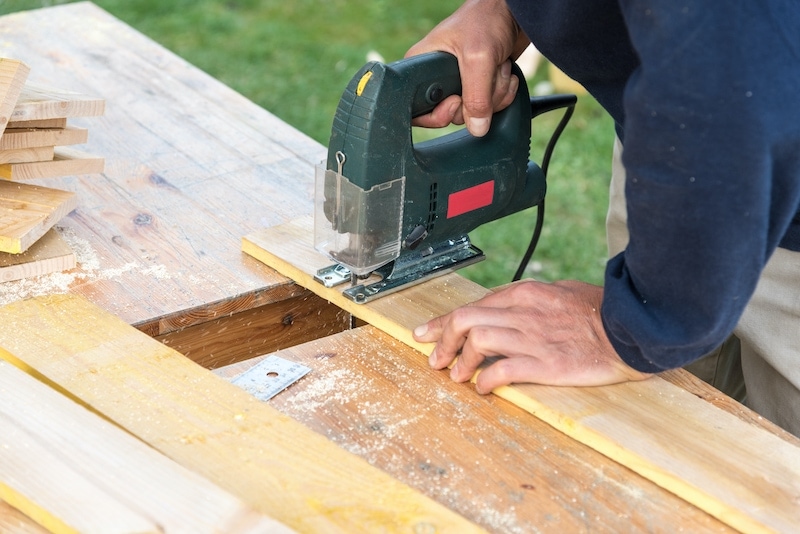6 Jigsaw Uses – What Can It Be Used For?
-
Pete Ortiz
- Last updated:

Since it’s small, nimble, and portable, the jigsaw is an indispensable tool in any DIY inventory. Most of us are familiar with it for its ability to cut simple shapes in wood, but it can do a lot more than that. We’ll look at some of its uses after we get an idea of what it is and how it works.
How does a jigsaw work?
A jigsaw is just a blade mounted to a reciprocating motor, which is one that pulls the blade up and then pushes it down. It replicates the action that once required using your muscles to cut into wood.
Jigsaws are portable tools you can use at your workbench or job site. They used to rely on power cords and wall power, but cordless jigsaws are available, and some are powerful, reliable tools.
What Can You Cut With a Jigsaw?
While jigsaws are most commonly thought of as tools that cut wood, and they perform best at making cuts in softer wood, they can cut several materials and help you finish jobs you didn’t think they had any application for.
A vital part of that is having the right blade. Your jigsaw can cut metal, fiberglass, drywall, laminate, and tile, but you must get the right blade. When buying jigsaw blades, check the package to ensure they are suitable for your intended use.
Let’s look at why you’d want to cut these materials.
1. Wood
Jigsaws are intended to cut wood, especially softwood. Because their blades are thin, they’re perfect for cutting curves and circles, and they’re ideal for detailed woodworking projects.
However, there is a lot more they can do when it comes to cutting wood. You can cut holes in countertops, and some models come with angling so you can use them to make beveled cuts.
2. Tile

With the right blade set to one of the faster settings, a jigsaw is an ideal way to cut and shape tile. It can cut quick, precise angles and curves that would otherwise require a much larger, more expensive specialty saw.
3. Metal

It might sound strange, but a jigsaw is the recommended way to cut sheet metal. It’s more accurate than metal shears and less dangerous than a cutting torch. Once you’re done, use sandpaper to smooth down the edges.
If you cut metal, you’ll need to lay the metal over a piece of wood you don’t mind cutting. Depending on the workstation, we recommend taping or stapling it in place so it doesn’t move while cutting.
4. Laminate

A jigsaw is a perfect way to make the curved cuts required when installing laminate flooring. It’s thin enough to get the saw’s blade through and isn’t so dense as to overpower it. Most of the time, you’ll want to cut with the bottom facing up in case the saw creates chips. You can use your jigsaw with a specialty blade on the laminate’s face.
5. Carpet

You can use a utility knife and change the blade a hundred times trying to install carpet, or you can take measurements, flip the carpet over, draw a pattern matching the shape and size you need, and use your jigsaw. If you do this, we recommend cutting it slowly and watching your blade. You might still need to change it several times, but at least it’ll save considerable strain on your wrist.
6. Pumpkins
You didn’t think your neighbors carved the face of that dead celebrity on their Jack O’ Lantern using a knife and imagination, did you? They used a pattern they drew and a jigsaw to cut it out. Jigsaw blades make short work out of the tough pumpkin rind and let you carve intricate designs to wow Trick or Treaters … or at least the kid who comes to smash it on the street.
Conclusion
Although it looks like a small saw intended to cut curves in light wood, a jigsaw is a much more versatile tool. It’s portable, lightweight, and powerful enough to cut most materials, especially if you have blades designed for metal, tile, and wood. Before using your jigsaw, remember to wear safety goggles, gloves, and ear plugs for protection. Below, you can check out some of our related guides to cutting various materials:
Featured Image Credit: Pixavril, Shutterstock
Contents




